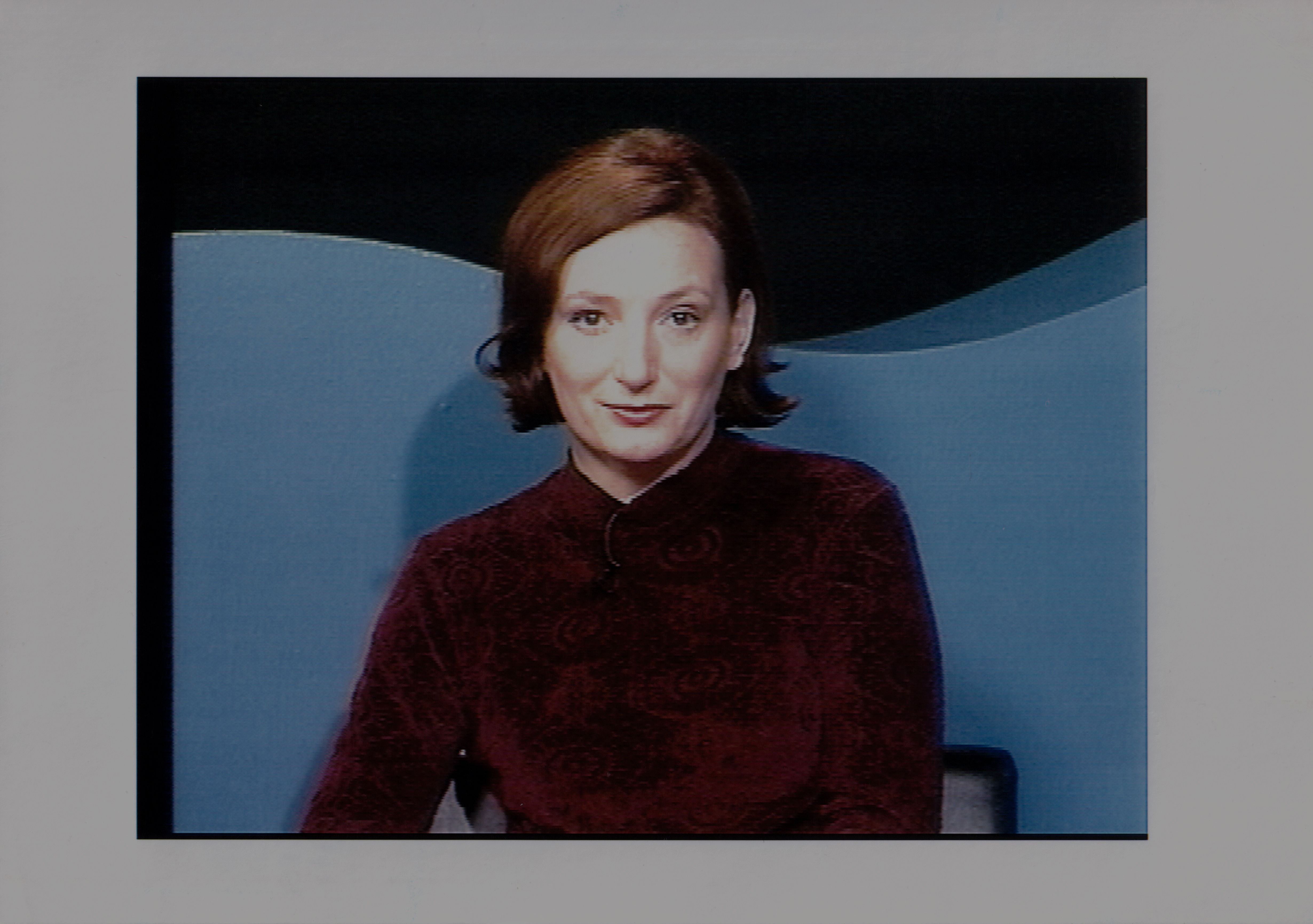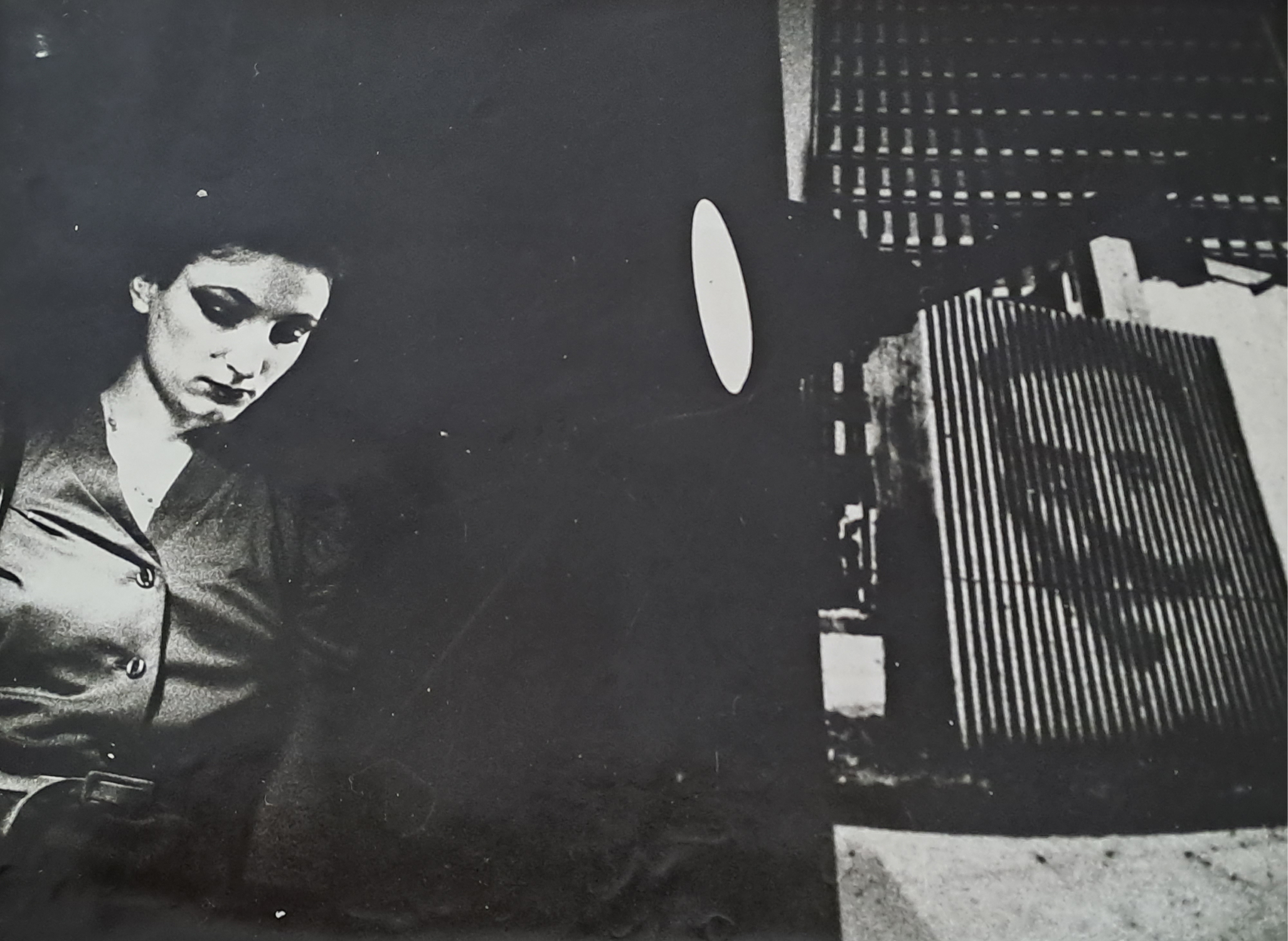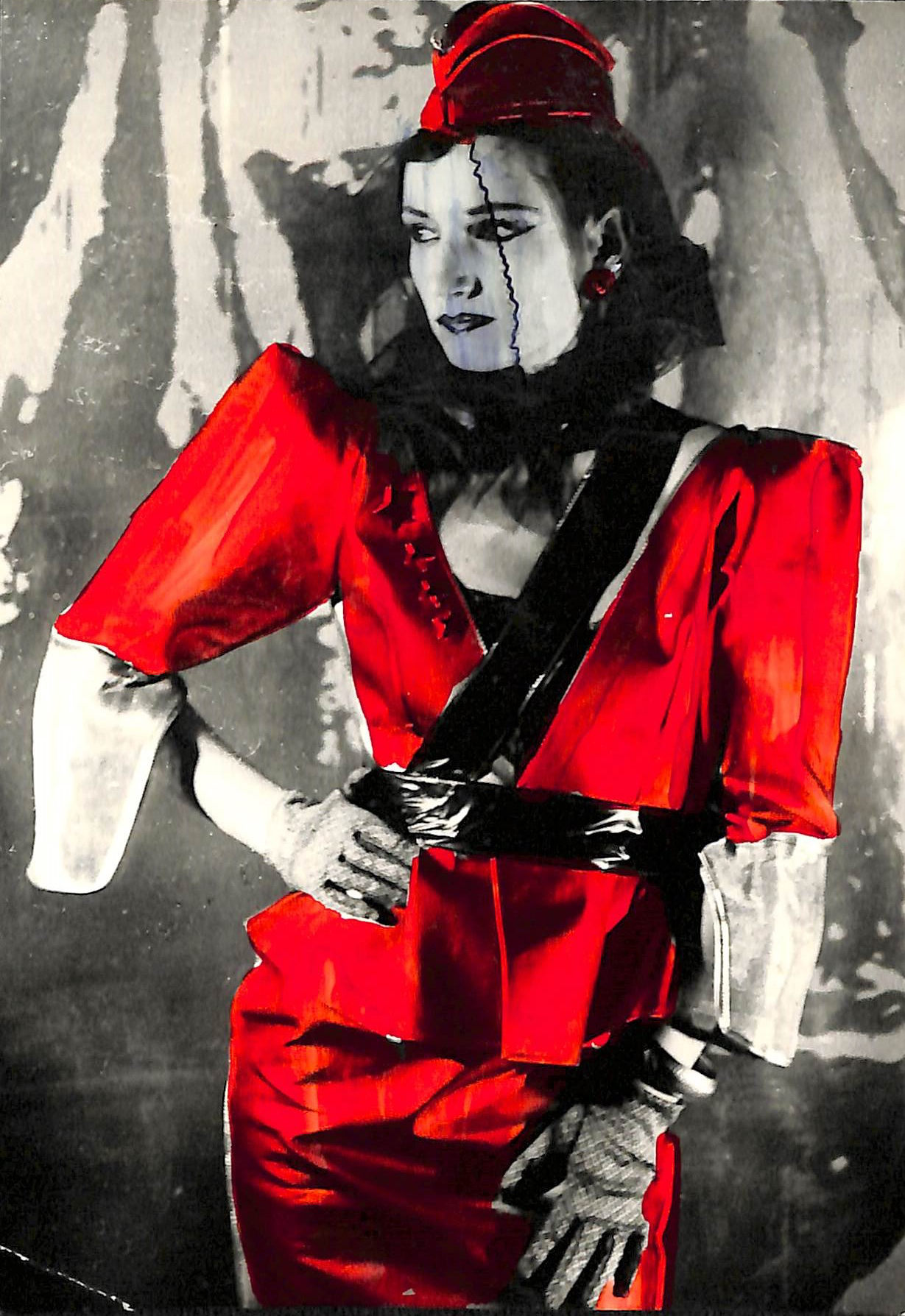→ ESTATE
Zemira Alajbegović
(b. 1958)
Ljubljana, Slovenia

THE ESTATE

The artist’s archive contains everything from documents, photographs, documentary videos, posters, catalogues, texts and press coverage to video works and films. She has been active in the field of contemporary arts as an artist, journalist and editor. As an independent video artist and filmmaker she has created numerous documentary films, music clips, dance videos, art videos, and television programs on art and culture.
Like most women artists working in the background to their fellow artists, she bravely paved her way to the art scene as a freelance artist. This was understood as the only possible status that would secure relative independence, especially in the 1980s and 90s.
Her work discloses, comments on, analyses and interprets the relation between the social and personal, the political and subliminal….
The artist’s archive is structured into three sections: Part One—Still Images, Part Two—Moving Images, and Part Three—Television. They roughly follow the artist’s engagement in art and culture from her early activism and creation to video art making and television production. The three parts also correspond to the form and means of expression and prevalent medium of production, communication and documentation.
Part One — Still Images: Two decades of activism and creation
In the 1980s, Zemira Alajbegović was a leading figure in the “alternative art scene” in Ljubljana, a widespread cultural movement in Slovenia that developed exciting artistic practices and social critique. Her roles were widespread, from performer, actress, screenwriter and videographer to publicist, editor and organizer. In Slovenia, the 80s were a period of alternative and civil society movements, including gay and lesbian, feminist, ecological and peace movements, as well as alternative arts and subculture, an expanded field of visual art and multimedia practices, and also years of widespread video production. In 1983, the first art video by a woman artist was made by Alajbegović with the title Tereza, a collage of representations of socialist victories and funerals. It was produced within the Ljubljana alternative and subculture movement (by FV Video), which was strongly connected with the rock/punk culture on one side and post-structuralist theory on the other. It was important also for video production and presentation. Video was an integral part of the alternative scene and at the same time its (media) effect, developing specific related dimensions and meanings. Video was largely used also to document the events and artistic and social practices of the time, and it was also a vital tool for identification and interpolation. This is also the reason that many artistic events and productions have been preserved. As a founding member of the Borghesia multimedia group, she was a performer and the co-author of visual and multimedia performances staged live in the form of multimedia shows using a variety of visual material, from films and slides to videos. She was also the co-author of video works/music clips by Borghesia and coproduced the first video cassette compilation by Borghesia, entitled So Young, under the FV Label, disseminated throughout Yugoslavia and Europe.
Part Two — Moving Images: Video films and documentaries
The 1990s were a time in Slovenia when video art enjoyed favourable conditions of production and presentation, which were also significant for the increasingly active participation of women (video) artists in the world of contemporary art, who, together with experts, helped to shape this stimulating environment. That period was also marked by an emphasis on (nominal) authorship and the distribution of roles in complex technological productions. Zemira Alajbegović, formerly a protagonist of the subcultural Theatre FV 112/15, member and organizer of FV Disco Club, FV Video and FV Label, and later a member of the multimedia group Borghesia, continued her earlier video practice under new conditions, as a solo artist or in a duo with Neven Korda (known also under the label ZANK). In addition to short and long art videos, she also made documentaries and music videos, and took part in multimedia projects. At that time, together with Korda, she introduced the new genre of video film in Slovenia, with all its specifics, such as its narrative structure, production methods and procedures in professional video studios. Their video films are characterized by meticulously elaborated screenplays, director’s scripts, collaboration of professional set designers, costume designers, actors and dancers, and the use of image manipulation and editing facilities in post-production. The first video film, in this sense of the genre, is Intolerance (1991), which combines superimpositions and overlapping images, stringing together abstract structures and signs with the cinematic story of the heroine. Their later films Autobus, Sand Collectors and The Slices of Time also focus on women and their fate in history, wars and avant-garde movements. The same goes for Quick/Slow by Alajbegović, with a woman in the grip of daily family rituals between hysteria and melancholy. In these video films she wrote another, different history: the history of those left out by history.
Part Three — Television
After 1990, the artist directed documentaries and TV programs and shows on art and culture, specializing in film and video art. In 1992 and 1993 she worked for the Kanal A television station (e.g. the program Podoba [The Image]), and later became a permanent collaborator with Slovene national television (RTV Slovenia). Since 2011, she has worked as a journalist, director and editor in the cultural section of Radio Television Slovenia, and apart from being an editor and director of culture shows, is also the author of the monthly film show Umetni raj [Artificial Heaven].
THE ARTIST

Artist's statement:
Philosophers have two theories of time: in the first, events are classified as past, present and future; in the second, events are only definable in relation to each other, according to the fact that they happened before or after a definite point in time. In the first one, time is the ascent of events from the future to the present, and the descent into the past; in the second, time is an unchangeable sequence of events—before and after. This is frozen time, co-existing with space.
The two perceptions of time are theoretically contradictory, but both of them are good parables for the conservation of time enabled by technology, for recording the present and reminiscing about the past. Future events emerge from the immeasurable volume of catalogued photographs, films and videotapes; they enter the screens of the present, only to glide the very next moment into the past; our view instantly enlightens the ephemeral, continuously changing images. All these people and events, whose pictures and sounds are preserved in chemical or electronic documents sunk into darkness: don’t they remind us of raspberries in a cake, forever contained and captured in frozen time and space?
When Neven Korda and I were preparing the video documentary The Old and the New—and even before, when in a series of programs about Slovene video production entitled The Image, we searched for videotapes from the 1980s—it felt like touching a frozen time, a stored and frozen past. A multitude of events, faces, sounds and words, captured on videotape, were brought to light, composed into a new whole, a new slice of time.
Our first video projects in FV Video in the early 1980s reflect a fascination with the potential of video technology, of the manipulation of video image. It was a great pleasure to cut, shorten, accelerate, and repeat the television image, to connect otherwise unconnectable images, to invest them with new meanings, like socialist rituals with personal enactments in my first video Tereza.
When I became a founding member of the FV 112/15 Theatre, we created shows as spectacles in the streets, on outdoor festival stages and in clubs. We used texts as written or spoken words, represented equally with other theatrical means: acting, photography, slides, lights, and music. We used a cut-up technique to deconstruct the narration and play with different approaches to theatre performances and staging.
On the other hand, the Borghesia Group took a more multimedia approach. The performances were staged live in the form of music and multimedia shows, using a variety of projections, of films, slides and video, on screens or television monitors.
In my videos I always combined several layers of images, words and sounds to create a multitude of layers that can form profound emotional spaces and personal narrations.
In retrospect, I realize that it was all about revealing history through a woman’s eyes. What I was interested in was the historical perspective: how great history rolls through and determines our small lives.
What is the common feature of my/our early robust video productions, the austere So Young and the indulgent The Triumph of Will by the Borghesia group, the wild wastelands of the video Intolerance and the documentary The Old and the New, or the short stories of Autobus and The Sand Collectors by Neven Korda and me? Video combines several layers of images and sounds—layers that can form profound emotional spaces on the glistening surface of the screen. Although the images move and we can hear them, video takes much more from comics than it does from film. It was comics that encouraged sequencing and the combination and movement of images, sounds and stories.
Zemira Alajbegović Pečovnik (born in Pula, Croatia, in 1958) is a sociology graduate of the Faculty of Social Sciences in Ljubljana, and pursued postgraduate media studies at Institutum Studiorum Humanitatis—Ljubljana Graduate School of Humanities. She has been active in the field of contemporary arts as an artist, journalist and editor. She is an independent video artist and filmmaker and has created numerous documentary films, music clips, dance videos, art video films, and television programs on art.
In the 1980s, she was a leading figure in the “alternative art scene” in Ljubljana, a widespread cultural movement in Slovenia that developed exciting artistic practices and social critique. Her roles were widespread, from performer, actress, screenwriter and videographer to publicist, organizer and president of the students’ cultural association ŠKD Forum in Ljubljana. From 1982 to 1988, she was a founding member of the FV 112/15 theatre and multimedia group and the FV Disco club, which worked on the Ljubljana subculture scene. This was the context in which she also started to work in video. In the 1980s, she cofounded the first independent music label (FV Label) and video production and publishing house (FV Video) in Yugoslavia. From 1983 to 1989, she was a member of the Borghesia multimedia group. In collaboration with Neven Korda (also a member of the aforementioned groups) she continued to author numerous film, music and dance videos. In the 1990s, she directed documentaries and TV programs on art and culture, specializing in film and video production. In 1992 and 1993 she worked for the Kanal A television station (e.g. the program Podoba [The Image]), and later became a permanent collaborator with Slovene national television. Since 2011, she has worked as a journalist, show director, and editor in the cultural section of Radio Television Slovenia (e.g. the monthly film show Umetni raj [Artificial Heaven]).